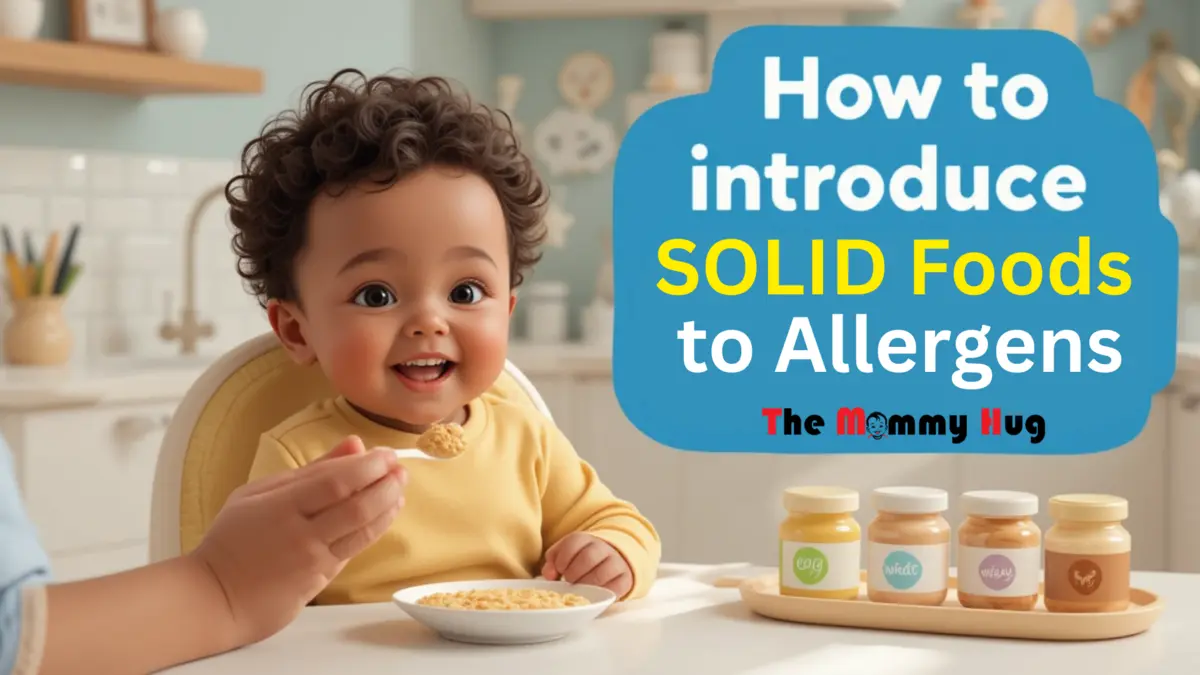The transition to solid foods is a milestone for parents and babies alike, but for families navigating food allergies, it can feel like a minefield. With 1 in 13 U.S. children affected by food allergies—a rate that has doubled since 2000—parents are increasingly seeking evidence-based strategies to safely introduce allergens. This article breaks down the latest research, expert recommendations, and actionable steps to help caregivers confidently tackle this critical phase.
Why Allergen Introduction Matters
Recent studies, including a landmark 2023 report in The Journal of Allergy and Clinical Immunology, confirm that early, controlled exposure to common allergens (e.g., peanuts, eggs, dairy) can reduce allergy risk by up to 80%. Yet, fear of reactions often leads parents to delay introduction, inadvertently increasing risks.
Key Statistics:
- 40% of parents postpone allergenic foods beyond 12 months.
- Peanut allergies alone affect 2.5% of U.S. children, with severe reactions tripling since 1997.
How to Introduce Solid Foods to Baby with Allergies (2025)
Step 1: Know the High-Risk Allergens
The “Big 9” allergens account for 90% of reactions in babies:
- Cow’s milk
- Eggs
- Peanuts
- Tree nuts
- Soy
- Wheat
- Fish
- Shellfish
- Sesame (newly added to FDA labeling laws in 2023).
Pro Tip:
- Start with single-ingredient, low-risk foods like pureed sweet potatoes or oatmeal for 3-5 days before introducing allergens.
Step 2: Use the “3-Day Rule” with a Twist
Pediatricians traditionally recommend introducing one food every 3 days to monitor reactions. For allergens, experts now advise:
- Day 1: Offer a tiny amount (e.g., 1/8 tsp peanut butter mixed with breast milk).
- Day 2-3: Gradually increase the portion if no reaction occurs.
- Day 4: Pause and watch for delayed symptoms (e.g., eczema flare-ups).
Red Flags to Watch For:
- Immediate: Hives, vomiting, swelling (seek emergency care).
- Delayed: Diarrhea, rashes, or congestion (consult a pediatrician).
Step 3: Partner with Your Pediatrician
The American Academy of Pediatrics (AAP) urges parents to create an “Allergen Introduction Plan” with their doctor, especially if:
- Baby has eczema or a family history of allergies.
- Parents are unsure about portion sizes or timing.
Dr. Lisa Kim, Pediatric Allergist at Boston Children’s Hospital, explains:
“We now use tools like the ‘allergy risk calculator’ to personalize timelines. For example, a baby with moderate eczema may start peanut paste at 4 months instead of 6."
Step 4: Embrace Safe Preparation Methods
- Peanuts: Use smooth peanut butter thinned with water (never whole nuts).
- Eggs: Hard-boil and mash yolks; avoid raw eggs.
- Dairy: Opt for full-fat yogurt or cheese (easier to digest than cow’s milk).
Parent Hack:
Freeze allergen purees in ice cube trays for portion-controlled servings.
The Rise of At-Home Allergy Tests: A Warning:
While companies like Everlywell market infant food sensitivity kits, the AAP cautions against overreliance. These tests often yield false positives, leading to unnecessary food avoidance.
Dr. Emily Nguyen, AAP Spokesperson:
“Skin prick tests and blood work in a clinical setting remain the gold standard. Home kits can’t replace medical advice."
Success Stories: Parents Share Their Journeys:
Case Study:
Jenny Martinez, a mom from Austin, Texas, introduced cashew butter to her 7-month-old using a “microdosing” approach.
“We started with a grain-of-rice-sized portion. By week 3, she tolerated a full teaspoon. Our allergist called it ‘textbook perfect.’"
Resources for Parents:
- Apps: SpoonfulOne (meal planner for allergen introduction).
- Websites: FARE (Food Allergy Research & Education) offers free printable checklists.
- Books: The Allergy-Free Baby by Dr. Gideon Lack (2023).
Conclusion:
Introducing solids to allergy-prone babies no longer requires guesswork. By combining early exposure, medical guidance, and vigilant monitoring, parents can significantly reduce risks while fostering a positive relationship with food. As research evolves, one message remains clear: proactivity beats fear.





